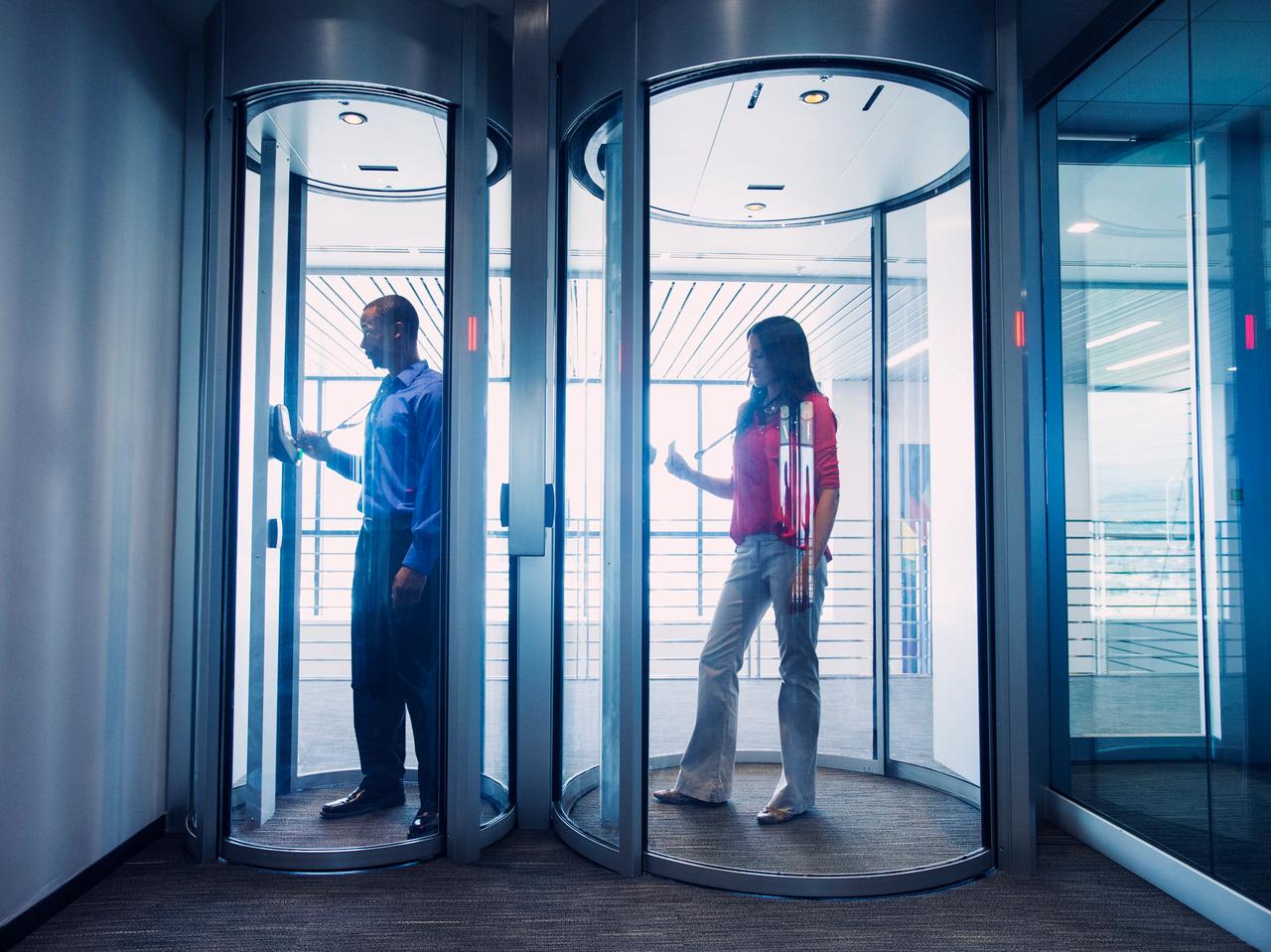

Monday — July 19, 2021
Looking for Security Entrances? Here Are 7 Factors to Consider


By Greg Schreiber
Senior Vice President of Sales, Boon Edam
Trends, Topics and Technologies


Circlelock Solo_Two-Factor Authentication — Image courtesy of Boon Edam
Are you looking to ensure you know who is in your building at all times? Security entrances, such as optical turnstiles and security revolving doors, when deployed with access control systems can make this a reality.
However, the process of determining which security entrances to install can be complex. There are many factors that must be taken into consideration for each individual deployment – and there is no “one-size-fits-all" solution for a facility.
Entrances can be a significant capital investment for an organization, and they provide an important visual “deterrent” for visitors. Not only do they need to be safe for individuals of all sizes, shapes and abilities to traverse, they also carry a heavy responsibility for helping maintain the physical security of the facility or campus.
To help you with this critical decision, here are seven factors to consider when purchasing security entrances. Overlooking just one factor can have devastating consequences and undermine the success of your entire project.
1) Throughput
Both integrators and end users usually agree that throughput (or the number of people who can enter and exit the entrance in a given period) is the first mandate for security entrances.
To make this important calculation, you need to consider the types of users as well as the number of users during different time intervals of daily business operations. If this is not a new facility, it will be helpful to do an assessment of usage of the current entrance.
Consider whether there will be children, strollers or service animals entering. There may be specific peak times of entrance use, such as a changing shifts or lunchtime when people are coming and going at the same time. Make sure you are planning for accessibility as well, including both for people with disabilities and for large deliveries, if applicable.
2) Security
The need to maintain a secure environment is part of every security entrance decision, whether doors, turnstiles or barriers are being considered. A solid security plan relies on a detailed assessment of the organizational culture, specific security hot spots within and along the perimeter of the facility, and how staff and visitors will be limited to areas in the building.
Think about the risks you are trying to mitigate. For example, is prevention of tailgating preferred, or is detection sufficient (because you will have supervision at that entry location)? Other things to consider include: do you have security staff to support the solution if needed, will the public need access to secured areas, and is there a requirement to secure the entrance remotely?
3) Safety
While the safety concerns of employees, staff and visitors have always been paramount, the COVID-19 pandemic has added a new layer of concern to the simple act of passing through an entrance.
Many organizations are migrating to touchless and frictionless options for their security entrances and access control solutions, along with options to support people-tracking and auditing the flow of those entering a facility. The traditional issues also still apply; the entrance must safely accommodate different user types including children and elderly individuals while providing the security function. The entrance also must conform to local codes or norms, and ensure there are well-practiced and understandable procedures regarding fire or evacuation, crisis, and emergency strategies.
Both integrators and end users usually agree that throughput (or the number of people who can enter and exit the entrance in a given period) is the first mandate for security entrances.
4) Aesthetics
The colors, finishes and architectural tone set by your building’s entrance is your organization’s first opportunity to make a positive impression for the brand. Work with your project management team to find the balance you want between functionality and design. You have a wide range of choices between materials, glazing and architectural finishes to choose from, so whether you want your entrances to blend in or stand out, you can find a door that will match your goals.
5) Technology
Technology is continually evolving and is a major driver of many new security installations. As the security paradigm changes, you should select the proper security entrance for your facility’s present needs while planning for its long-term impact on your organization’s security future. Using the most current technologies while enabling consistent updates will ensure optimal performance and the best approach to minimizing environmental impact. Your technology choices should also meet all legislative requirements, as well as health and safety protocols.
Fortunately, most security entrances on the market today are electro-mechanical barriers that can work with just about any access control system or credential or biometric reader. It’s up to you which technology you want to use to create a solution that authorizes single entry access.
6) Comfort
Your personnel and visitors should have a positive experience when they use the new security entrances. Security entrances are designed to be used by “trained traffic” but a positive experience that includes ease of use as well as convenience and simplicity in operation will serve well.
Does the turnstile only allow traffic in one direction at a time when you require access for bi-directional traffic? Consider adding additional lanes so people don’t have to slow down and take turns entering or exiting. Be considerate of where you install credential readers to not disrupt the flow of traffic in either direction. Watch out for deploying multi-factor authentication that slows down throughput or increases user error rate. And, regarding physical comfort, should turnstile lanes be wider or door diameters be a little larger to allow for more substantial “personal space” zones?
Finally, certain security entrance solutions can also contribute to the overall environmental comfort of a building. For example, security revolving doors minimize the exchange of interior and exterior air, helping to maintain the temperature inside the facility while also delivering additional cost efficiencies – and reducing your carbon footprint.
7) Service
Once your entrances are installed, service and support become the most important elements of your overall investment, affecting both continuing operations and the ROI of the product. Yet, service is often considered last when purchase decisions are made.
Usually security entrances are purchased by the security team, but later “owned” by a facilities manager who may not be involved in the purchasing decision (even though they should be). Be sure to choose a provider who offers you a plan for preventative maintenance, provides post-installation technical training, and delivers swift response times when there is a problem. The best vendors put the needs of their customers first - even long after the initial sale.
Choosing the right security solution can feel like a challenge, but these seven fundamental considerations will help you ask your entrance provider the right questions.
The best approach is to work together with your provider for an entry evaluation, a “walk through” of your building or campus to define vulnerable entry points and discuss other unique but critical concerns, like throughput needs, industry compliance requirements, etc. This is the best way to ensure your purchase is the right fit for your organization, before, during and after the sale.
July 19-21, 2021 • www.iscwest.com


